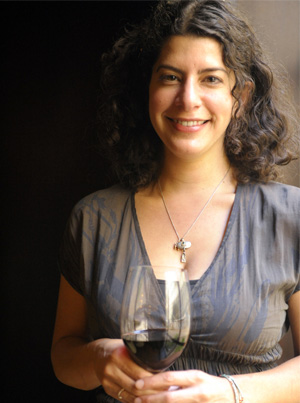

You note that sales were definitely up this year. Where was that coming from?
This year people were a bit less focused on value wines, and more focused on getting a great bottle of wine. They were willing to spend a little more. Plus, I’ve also found some guests willing to get really adventurous with me.
You seem to be selling a fair about of Burgundy. Which wines are getting the most attention these days?
I’ve noticed that the 2005 vintage in general is on everybody’s radar. They’re very good—though they can be a little bit tightly wound still.
We’ve always been a Burgundy-focused restaurant and we’ve got some good values from 2008 on the list. The Bouchard [Beaune du Château] is a Premier Cru from a collection of vineyards—a great food wine. And I have a couple vintages from Maume on list. Their 2008 Gevrey-Chambertin is little more rugged, so it’s great for those who don’t want to spend too much money, but want to explore Burgundy—it’s a fairly accessible wine that tastes great right off the bat.
One riesling made it onto your top-ten list, the 2009 von Buhl Pfalz Forster Jesuitengarten Spätlese. Are people finally coming around to riesling?
It’s been a grape I’ve championed. It’s a great food wine, it’s something I use with the tasting menu all the time. We did the Summer of Riesling this year for three or four months. We even had an all-riesling tasting menu. Sale’s weren’t the point: we thought, let’s really get people behind this grape.
The more adventurous were excited and went for it, and some didn’t want to commit to it, and would do alternate pairings. One thing that was really interesting was the response to a von Buhl Riesling Sekt. Many guests didn’t know that you could have a sparkling riesling, especially from a house that uses methode Champenoise and has been doing it for a hundred years.
The 2005 Paradigm Napa Valley Cabernet did well on your by the glass list, at $28 a glass.
Having an older California cabernet by the glass is of interest to a lot of guests. We’re in a hotel, so you get a lot of travelers. I always offer two cabs by the glass, so there’s a lower-end option as well—so nobody feels locked in if that’s their favorite grape. With Paradigm, I also have the 2007 on the list, and that’s a heralded vintage that people want to drink right now. It’s affordable, when you’re talking about California cabernet.
Your top by-the-glass pours included a couple of Loire wines—a Chinon, a Cheverny. Do guests recognize the Loire as a source of good value, or does the staff recommend those wines?
With the Domaine de Salvard Cheverny, it’s my only sauvignon blanc by the glass, and also it’s a value on the list. It falls in the middle: good for people who want a racier style, and for people who want a juicier style. It’s a beautiful marriage of both.
With the Pallus Chinon, it’s just a great wine, my second vintage of that. My staff does get behind that, because it’s great with food or on its own.
Sean Thackrey Pleiades: that’s a pretty interesting wine to end up being the most popular by-the-glass pour this year.
That’s a combination of things. It’s local, a California wine, my staff loves it, it’s a great food wine, there’s a story behind it and it falls in the middle in terms of price. We use it for a lot for pairings, even on the tasting menus. And some guests actually do know it. It’s a blend of mostly sangiovese, some pinot, some mourvedre, possibly a little syrah, petite sirah, viognier, marsanne. It’s 14.5 percent alcohol but light in color, deft, herbaceous, juicy, with all kinds of interesting flavors, and not in any way heavy.
You biggest new success was from the Valle d’Aosta, Les Cretes Petite Arvine.
Les Cretes is amazing. I’ve been drinking those wines for a long time, since my days working with Jeff Berlin at À Côté.
In Phoenix, I was at a Kimpton conference, talking with one of the winery reps. He asked where I worked before this job, and I said I worked at a little place in Oakland, Á Côté. He reached into his suitcase and pulled out a dog-eared copy of their wine list, right in the middle of the lobby!
About four years ago, when I was still a server at Fifth Floor I said, let’s get this, it’s a cool wine that will go great with food. So the wine buyer at the time bought me a case, and I hand-sold the whole thing. Now it’s on our core beverage program, so it’s available to fifty Kimpton restaurants across the country.
What was the most challenging request put to you last year?
There was a table of three young women in their mid-20s, and they all liked disparate styles of wine—they posed this as a challenge to me because they wanted to share one bottle. One particularly wanted something in a lighter style, another didn’t want something light, plus there was a food-pairing going on, too. I ended up recommending an Etna Rosso from Biondi, from volcanic soil. It was really elegant for somebody who might like Burgundy or something more suave, not a big, extracted wine, and they were absolutely blown away. Each of them thought it was perfect. In that case, you’re asking yourself: is this going to please all the palates? You never know!
What was the most memorable wine you opened this year?
A 1959 Haut-Brion, that was pretty memorable. There should be an explanation point! That is a life-changing bottle. We all get that Bordeaux has a lot of hype and is an important region, but because of that you can kind of pooh-pooh it because it’s got a price tag attached, and not every bottle is as amazing as the price tag suggests.
It was on the list. A guest wanted to order it, but there was some concern that it wasn’t going to be good, because it was quite an old bottle. I said: we’ll open it and we’ll see. The minute I smelled it, I knew it was a good bottle. I tasted it and it was truly a great bottle of wine. I’m not a Bordeaux champion—it sells itself. But there were heart palpitations, as there should be when something is that historic. There’s that sensation of knowing that it’s even better than you hoped it was going to be—that’s a really great feeling.
Longtime senior editor at Wine & Spirits magazine, Luke now works for the Stanford Technology Ventures Program.
















